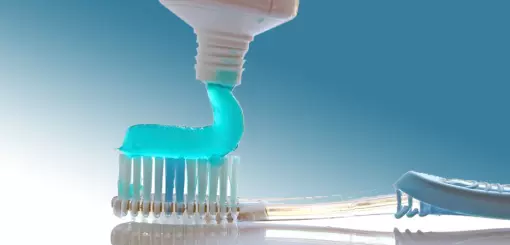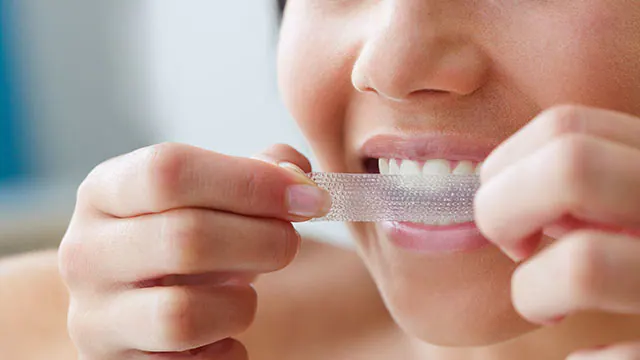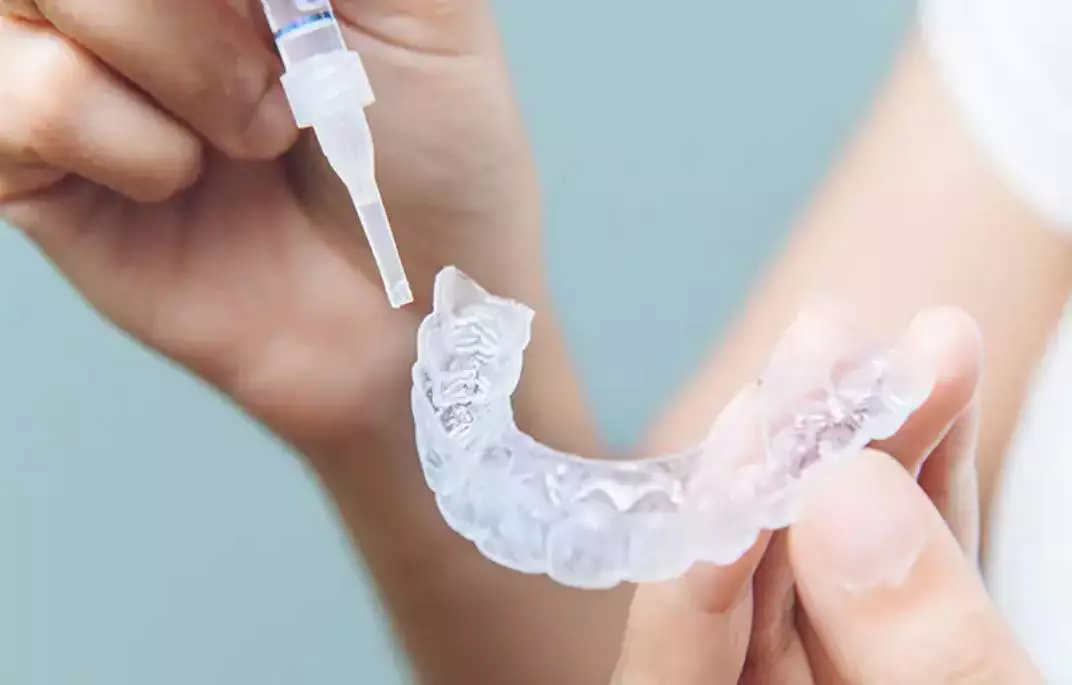Teeth whitening is a popular cosmetic dental procedure that aims to lighten the color of your teeth and remove stains or discoloration. There are several options and techniques available for teeth whitening, ranging from at-home remedies to professional treatments. Here are some common teeth whitening options:
- Whitening Toothpaste: Whitening toothpaste contains mild abrasives that can help remove surface stains on your teeth. However, they are not as effective at changing the natural color of your teeth.
- Whitening Strips: Over-the-counter whitening strips are thin, flexible plastic strips coated with a whitening gel containing peroxide. You apply them directly to your teeth and leave them for a specified period. These strips can gradually whiten your teeth over a few weeks.
- Whitening Gels and Trays: Whitening gels contain peroxide and are applied to your teeth using a tray that molds to your teeth. These trays can be custom-made by a dentist or purchased over the counter. You wear the tray for a specified period, usually a few hours a day or overnight, for a couple of weeks.
- In-Office Teeth Whitening: Professional teeth whitening Options treatments performed in a dental office provide faster and more dramatic results. The dentist applies a highly concentrated whitening gel to your teeth and activates it with a special light or laser. The process is usually completed in a single visit, and you can see significant improvement in the color of your teeth.
- Take-Home Whitening Kits: Dentists may provide customized take-home whitening kits that include trays and a professional-strength whitening gel. These kits allow you to whiten your teeth at your convenience, following the dentist’s instructions.
- Natural Remedies: Some people prefer natural teeth whitening options remedies, such as brushing with baking soda, hydrogen peroxide, or activated charcoal. However, it’s essential to use caution with these methods as they may have abrasive properties and can potentially damage your tooth enamel if used incorrectly or excessively.
It’s important to note that not all teeth discoloration can be effectively treated with whitening procedures. For example, teeth with intrinsic stains or discoloration caused by certain medications or dental conditions may not respond well to whitening. In such cases, your dentist may recommend alternative cosmetic options like dental veneers or bonding to improve the appearance of your teeth.
Before deciding on any teeth whitening options, it’s advisable to consult with your dentist. They can evaluate your oral health, determine the cause of tooth discoloration, and recommend the most suitable whitening solution for you.
Get teeth whitening options in Dubai
Are you longing for a radiant, confident smile? Look no further! Experience the magic of teeth whitening in Dubai, where dazzling smiles come to life. Our premier dental clinic offers state-of-the-art teeth whitening services that will leave you with a brilliant, camera-ready smile.
Unlock the power of professional teeth whitening options in the heart of Dubai. Our skilled team of dental experts utilizes advanced techniques and cutting-edge technology to transform dull, stained teeth into pearly whites. Say goodbye to stubborn discoloration and hello to a captivating smile that will turn heads.
Indulge in the luxury of our in-office teeth whitening options options treatment. Sit back and relax as our experienced dentists work their magic, applying a high-concentration whitening gel to your teeth. With the aid of specialized light sources, the gel penetrates deep into the enamel, erasing years of staining and revealing a dazzling smile in just one visit.
Prefer the convenience of whitening your teeth in the comfort of your own home? Our tailored take-home whitening kits are the perfect solution. Our dental professionals will create custom trays that fit snugly over your teeth, ensuring maximum contact with the powerful whitening gel. Follow our simple instructions, and watch as your smile transforms day by day.
At our reputable dental clinic, we prioritize your safety and satisfaction. Our team of experts will conduct a thorough examination of your oral health and discuss the best teeth whitening options for you. Whether you have intrinsic stains, yellowing teeth, or simply desire a brighter smile, we have the expertise to deliver exceptional results.
Don’t settle for a lackluster smile any longer. Embrace the confidence that comes with a stunning, white smile. Discover the secret to captivating smiles with our teeth whitening options options services in Dubai. Contact us today to schedule your consultation and embark on a journey towards a brighter, more radiant smile that will leave a lasting impression.

Whitening Toothpaste
Whitening toothpaste is a popular oral care product designed to help remove surface stains from teeth and restore their natural whiteness. Here are some key points about whitening toothpaste:
- Stain Removal: Whitening toothpaste contains mild abrasives that help scrub away surface stains caused by factors like food, beverages, and tobacco. These abrasives work by polishing the tooth enamel gently, removing extrinsic stains and making your teeth appear brighter.
- Peroxide or Baking Soda: Many whitening toothpaste formulas include additional ingredients like hydrogen peroxide or baking soda. These ingredients have mild bleaching properties that can help lighten tooth color over time. However, it’s important to note that the concentration of peroxide in whitening toothpaste is much lower compared to professional whitening treatments.
- Effectiveness: Whitening toothpaste can be effective in removing surface stains and giving your teeth a brighter appearance. However, they may not be as effective in changing the natural color of your teeth or treating deep stains. If you have significant discoloration or desire more noticeable results, professional teeth whitening options or dental procedures may be more suitable.
- Regular Use: Consistency is key when using whitening toothpaste. For optimal results, it’s important to brush your teeth with the toothpaste at least twice a day, following proper brushing techniques. Remember to maintain good oral hygiene practices, including regular dental check-ups and cleanings, to keep your teeth healthy and maintain their whiteness.
- Considerations: Whitening toothpaste is generally safe for daily use. However, some people may experience tooth sensitivity or gum irritation when using these products. If you notice any adverse effects or have concerns, it’s best to consult with your dentist.
- Limitations: Whitening toothpaste is not suitable for everyone. It is not recommended for individuals with intrinsic stains or discoloration caused by factors like tooth trauma, certain medications, or dental conditions. In such cases, professional teeth whitening treatments or alternative cosmetic options may be more effective.
Remember that maintaining good oral hygiene practices, such as regular brushing, flossing, and professional cleanings, plays a crucial role in keeping your teeth healthy and minimizing surface stains. If you have specific concerns about teeth discoloration or desire more significant whitening results, consult with your dentist, who can assess your oral health and recommend the most appropriate whitening options for you.

Whitening Strips
Whitening strips are a popular over-the-counter teeth whitening options that can help brighten your smile and reduce the appearance of surface stains. Here’s some information about whitening strips:
- How They Work: Whitening strips are thin, flexible strips coated with a whitening gel that typically contains peroxide. The gel is the active ingredient that helps remove stains and discoloration from your teeth. When applied to your teeth, the gel comes into contact with the enamel and begins to break down stains, revealing a brighter smile.
- Application: Whitening strips are designed to be easy to use. You simply peel the strips from their backing and apply them to your teeth, making sure they adhere properly. The strips are usually worn for a specified amount of time, typically around 30 minutes to an hour, depending on the brand and instructions provided. It’s important to follow the usage directions carefully to ensure safety and effectiveness.
- Convenience: One of the advantages of whitening strips is their convenience. You can use them in the comfort of your own home, making them a popular choice for people who prefer an affordable and DIY teeth whitening option. They are also portable, allowing you to carry them while traveling or on-the-go.
- Gradual Results: Whitening strips typically provide gradual results rather than immediate whitening. You may need to use them consistently over a period of several weeks to achieve the desired level of whitening. It’s essential to have realistic expectations and understand that the degree of whitening can vary depending on factors such as your natural tooth color and the severity of stains.
- Considerations: While whitening strips can be effective for many people, they may not be suitable for everyone. Some individuals may experience tooth sensitivity or gum irritation when using whitening strips. If you have sensitive teeth or gum problems, it’s advisable to consult with your dentist before using them. Additionally, it’s important to note that whitening strips primarily work on surface stains and may not be as effective for deep or intrinsic discoloration.
- Combination with Oral Care: To maximize the effectiveness of whitening strips, it’s essential to maintain good oral hygiene practices. Regular brushing, flossing, and dental cleanings can help remove plaque and surface stains, allowing the whitening strips to work more effectively.
Before starting any teeth whitening options regimen, it’s recommended to consult with your dentist. They can evaluate your oral health, determine the cause of tooth discoloration, and provide guidance on the most suitable whitening options for you, including the use of whitening strips.

Whitening Gels and Trays
Whitening gels and trays are a popular method for teeth whitening that can provide effective and convenient results. Here’s some information about whitening gels and trays:
- Whitening Gels: Whitening gels contain a bleaching agent, often carbamide peroxide or hydrogen peroxide, which helps break down stains and discoloration on the teeth. These gels come in different strengths, with higher concentrations typically providing more significant whitening results. Whitening gels are usually clear and have a thick consistency.
- Custom-Fit Whitening Trays: Custom-fit whitening trays are designed to hold the whitening gel in place and ensure even application on the teeth. These trays are made from flexible plastic or silicone material and are custom-made to fit your teeth precisely. Custom-fit trays offer better comfort and prevent the gel from leaking or spreading unevenly.
- Over-the-Counter Whitening Kits: Many over-the-counter teeth whitening kits include whitening gels and generic trays that are not custom-fit. These kits often provide a one-size-fits-all tray or boil-and-bite trays that can be molded to some extent. While these kits can be more affordable, custom-fit trays from a dental professional tend to provide better results and a more comfortable experience.
- Usage: To use whitening gels and trays, you typically fill the tray with a small amount of the whitening gel and place it over your teeth. The tray is worn for a specified period, usually ranging from 30 minutes to a few hours, depending on the concentration of the gel and the instructions provided. It’s crucial to follow the instructions carefully to avoid overuse or potential adverse effects.
- Gradual Whitening: Whitening gels and trays generally provide gradual whitening results over several weeks of consistent use. The duration of treatment varies depending on the desired level of whitening and the concentration of the gel. It’s important to have realistic expectations and understand that the degree of whitening can vary among individuals.
- Professional Guidance: While over-the-counter whitening gels and trays can be effective for some people, it’s advisable to consult with a dental professional for the best results. A dentist can assess your oral health, determine the cause of tooth discoloration, and provide custom-fit trays and professional-strength whitening gels tailored to your specific needs.
- Tooth Sensitivity: Some individuals may experience temporary tooth sensitivity or gum irritation when using whitening gels and trays. If you have sensitive teeth or gum problems, it’s recommended to consult with your dentist before starting any whitening treatment.
Remember, maintaining good oral hygiene practices and regular dental check-ups are essential for overall oral health and to maximize the effectiveness of teeth whitening options treatments. Your dentist can guide you on the appropriate use of whitening gels and trays and provide personalized recommendations based on your oral health and whitening goals.
Take-Home Whitening Kits
Take-home whitening kits are a convenient and popular options for teeth whitening that allows you to achieve a brighter smile in the comfort of your own home. Here’s some information about take-home whitening kits:
- Custom-Fit Trays: Take-home whitening kits typically include custom-fit trays that are designed to fit your teeth precisely. These trays are made from flexible plastic or silicone material and are created based on impressions taken by your dentist. Custom-fit trays ensure even distribution of the whitening gel and provide better comfort during the whitening process.
- Whitening Gel: The take-home whitening kit also includes a whitening gel that contains a bleaching agent, usually carbamide peroxide or hydrogen peroxide. The gel is applied to the custom-fit trays, which are then placed over your teeth. The bleaching agent within the gel helps break down stains and discoloration, resulting in a brighter smile.
- Usage: To use a take-home whitening kit, you typically apply a small amount of the whitening gel into the custom-fit trays and then wear the trays for a specified period, as instructed by your dentist. The duration of use can vary depending on the concentration of the gel and the desired level of whitening. It’s important to follow the instructions provided by your dentist to ensure safe and effective use.
- Gradual Whitening: Take-home whitening kits provide gradual whitening results over a period of several weeks. The frequency and duration of use will depend on the specific instructions given by your dentist. It’s important to have realistic expectations and understand that the degree of whitening can vary among individuals.
- Professional Guidance: Take-home whitening kits are typically provided by dental professionals. Your dentist will evaluate your oral health, discuss your whitening goals, and create custom-fit trays that fit your teeth precisely. They will also provide you with the appropriate strength of whitening gel and guide you on how to use the kit effectively.
- Convenience: Take-home whitening kits offer flexibility and convenience. You can perform the whitening treatment at your own convenience, whether it’s during the day, evening, or even overnight. This flexibility allows you to incorporate teeth whitening into your daily routine without needing to schedule multiple visits to the dental office.
- Maintenance and Results: After completing the initial whitening treatment, your dentist may provide you with maintenance instructions and additional gel for periodic touch-ups. Proper maintenance, along with regular brushing, flossing, and dental check-ups, can help prolong the results of your teeth whitening treatment.
It’s important to note that not everyone is an ideal candidate for teeth whitening options, and the suitability of a take-home whitening kit may vary depending on your oral health and the cause of tooth discoloration. Consulting with your dentist is crucial to determine if a take-home whitening kit is the right option for you and to receive personalized guidance and recommendations.

Natural Remedies
There are several natural teeth whitening options treatments that people often try as alternatives to commercial whitening products. While these methods may have some benefits, it’s important to note that their effectiveness can vary, and they may not provide the same results as professional whitening treatments. Here are a few natural teeth whitening treatments:
- Baking Soda: Baking soda is a common ingredient found in many toothpaste formulations. Its mild abrasive properties can help remove surface stains from teeth. You can mix a small amount of baking soda with water to create a paste and brush your teeth with it. However, it’s important to use baking soda sparingly and not excessively as it can be abrasive and potentially damage the enamel.
- Hydrogen Peroxide: Hydrogen peroxide is a natural bleaching agent that can help whiten teeth. You can use a diluted hydrogen peroxide solution as a mouthwash by mixing equal parts of hydrogen peroxide and water. Swish the solution in your mouth for a minute or two and then rinse thoroughly. It’s important to use food-grade hydrogen peroxide and avoid swallowing it.
- Oil Pulling: Oil pulling is an ancient Ayurvedic practice that involves swishing oil, typically coconut oil or sesame oil, in your mouth for about 15-20 minutes. Some people claim that oil pulling can help remove bacteria and stains from teeth, leading to a brighter smile. However, more scientific research is needed to confirm its effectiveness.
- Fruit Peels: Rubbing the inside of fruit peels, such as banana peels or orange peels, on your teeth is another natural remedy that some people believe can whiten teeth. The peels contain natural compounds, such as citric acid and bromelain, which may have mild whitening properties. However, there is limited scientific evidence to support these claims.
- Apple Cider Vinegar: Apple cider vinegar is sometimes suggested as a natural teeth whitener. However, it’s important to be cautious with this method as vinegar is highly acidic and can erode tooth enamel if used excessively or in high concentrations. If you choose to use apple cider vinegar, dilute it with water and rinse your mouth thoroughly afterward.
It’s important to note that natural teeth whitening options treatments may not be suitable for everyone, and their effectiveness can vary. Additionally, some of these methods can potentially have adverse effects if used improperly or excessively. If you’re considering natural teeth whitening treatments, it’s always a good idea to consult with your dentist to ensure they are safe for you and to discuss other whitening options that may be more effective and appropriate for your specific needs.


